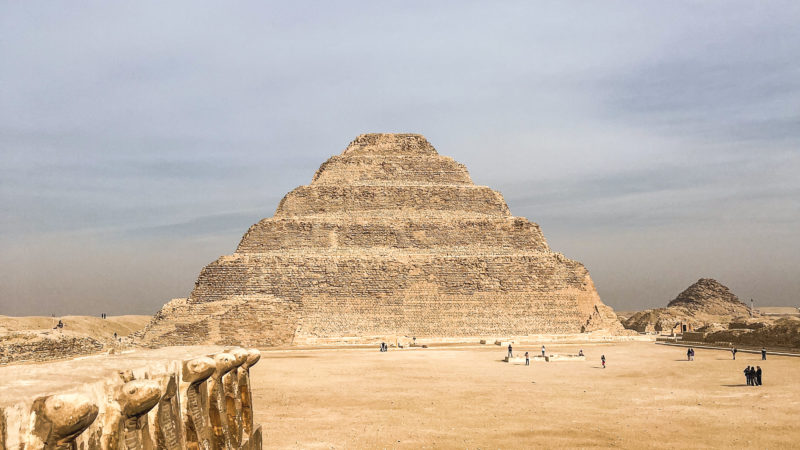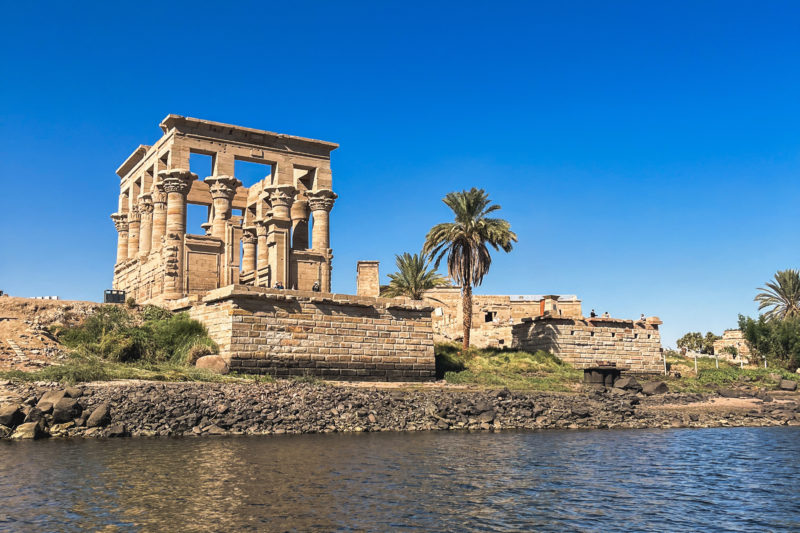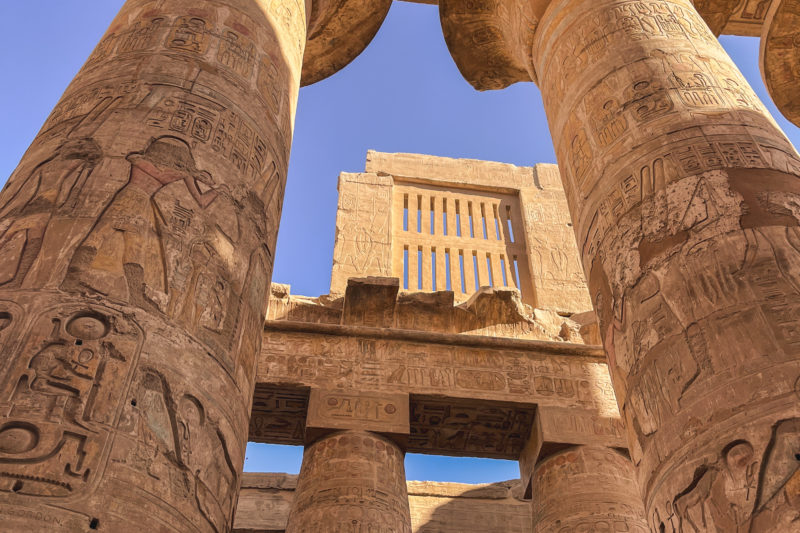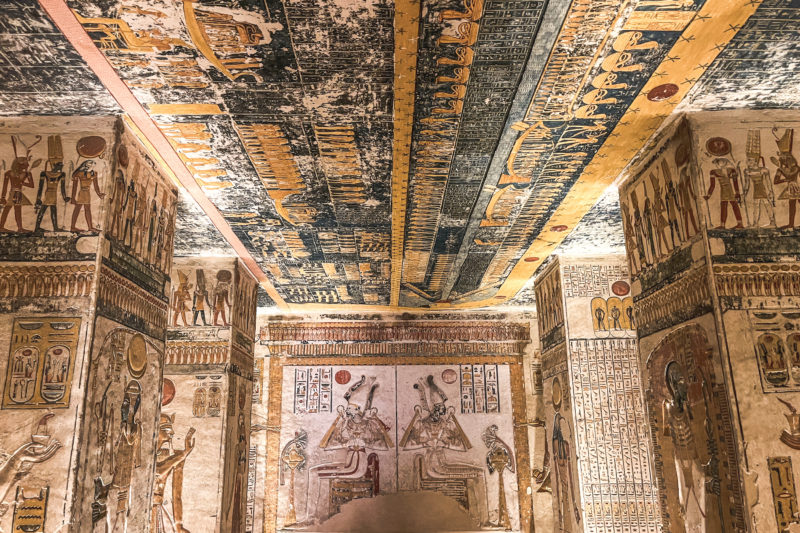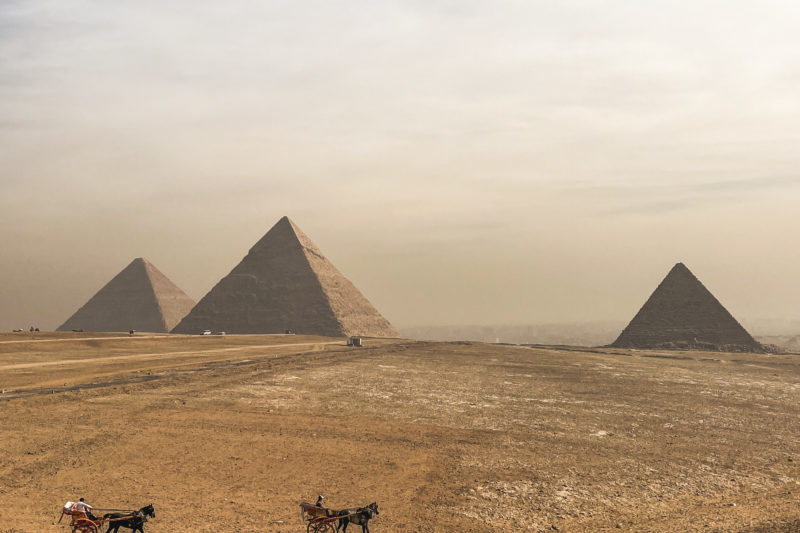“Man fears time, but time fears the pyramids.” – Arabic Proverb
After diving into the millennia-old history of Cairo, it was time to venture into the mysteries surrounding the pyramids. The second day of our journey took us on the trail of ancient civilizations to fascinating sites just a short distance from the capital.
Saqqara: The First Pyramid in History
Our first stop of the day was Saqqara, an essential archaeological site home to the famous Step Pyramid of Djoser. This pyramid, one of the oldest and most iconic in Egypt, marked a turning point in funerary architecture. Built-in the 3rd millennium BCE, it paved the way for the great pyramids we know today. The structure was designed by Imhotep, a well-known figure in popular culture. In reality, Imhotep was a man of many talents—vizier, physician, architect, and much more—under King Djoser’s reign.
We were standing in the presence of history: each stone seemed to whisper secrets of antiquity. Admittedly, it wasn’t our guide’s faint murmurs (I’ve mentioned him here) that would reveal the pyramids’ mysteries. For this day, our imagination and a few explanatory signs served us well.







Walking around the site, the feeling of being before an ancient yet strikingly modern architectural feat was overwhelming. It left us in awe of the builders’ ingenuity, making us feel small in comparison to these imposing structures.
Dahshur: Pyramids and Transitions
A few kilometres from Saqqara lies Dahshur, a lesser-known site that nonetheless holds even more fascinating surprises. Why? Because we had the chance to explore the inside of a pyramid and believe me, it was an unforgettable experience!
Picture this: descending backwards into the depths of a pyramid, then climbing back up (as the entrance is not at the base but mid-height) to find yourself in the very heart of the structure, surrounded by tons upon tons of stone blocks. Claustrophobic? Not quite… The most unsettling part wasn’t the heavy air, but the bats that happily accompanied us on our visit.



But really, who can say they’ve been at the centre of a pyramid? It was just… incredible!
Now, let’s move beyond our explorer tales. Dahshur is best known for two major structures: the Red Pyramid (the first smooth-sided pyramid) and the Bent Pyramid. The latter, unique for its shape, features two distinct inclines: the first, from the base to the midpoint, slopes at 58°, while the second, rising to the summit, inclines at 43°22′. This change in angle, which gives it such a peculiar appearance, is thought to result from a mid-construction adjustment to the original plan—a daring architectural experiment that didn’t fully succeed.


Dahshur is a key site in the evolution of pyramids. It showcases the first architectural experiments, transitioning from Saqqara’s Step Pyramid to the classic form we now associate with the Pyramids of Giza. It’s a genuine turning point in Egyptian architectural history, where the air seems infused with the energy of ancient attempts to defy time and space.


Memphis: The Ancient Capital of the Pharaohs
After exploring these appetizers of the Giza pyramids, we headed to Memphis, the ancient capital of Pharaonic Egypt. Today, this city is little more than an open-air museum, but its historical impact remains unparalleled. Strolling among the ruins of temples and colossal statues, you can immediately feel the grandeur of this city—a centre of power that once ruled the entire Nile Valley.
As the capital of Egypt throughout the Old Kingdom, Memphis retained its importance throughout Egyptian history. It was a major political and religious hub, where the god Ptah was particularly venerated and where pharaohs were crowned. During the Middle Kingdom, Memphis was nicknamed the “Balance of the Two Lands,” underscoring its central role between Upper and Lower Egypt.
During our visit, we admired the impressive statue of Ramses II. Its grandeur and majesty leave an unforgettable impression. We also discovered the alabaster Sphinx: carved from a single block, it stands 4 meters tall, 7 meters long, and weighs 80 tons. These features suggest it might have belonged to Queen Hatshepsut.




A Journey Through Time
Each stage of this day brought us closer to the mysteries of Egyptian civilization. Each pyramid, each ruin, and each relic told a story of ambition, the quest for eternity, and architectural ingenuity. The site of Saqqara, the pyramids of Dahshur, and the ruins of Memphis are open pages of history, where the past seems to stretch into infinity.
This second day helped us better understand the world view of the ancient Egyptians—a civilization already thinking of the afterlife with eternal monuments, and symbols of power meant to be indestructible. And even after millennia, the pyramids continue to defy time, reminding us that, ultimately, they have the final word.
As we left these sites, one certainty remained: Egypt does not easily reveal its secrets. You have to experience it, feel it, and every moment transports you to another world, where eternity is measured in stones and shadows.
What’s next? The Pyramids of Giza, of course. But that’s for the next day.

